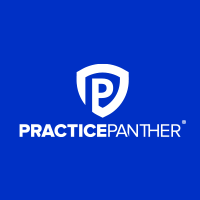Driven by market demand for efficiency and cost savings, the largely traditional legal industry is increasingly adopting legal technology to improve processes. Implementing a law practice management software (LPM) can help law firms minimize administrative tasks and spend more time practicing law and meeting client demand.
There are many moving parts to adopting new software and processes in a law firm. Once you’ve done your research and landed on viable options, getting the staff’s buy-in to the new law practice management platform is essential. Without sufficient onboarding and training, law firms won’t get the full return on investment or leverage the features to run their practice as efficiently as possible.
While introducing any new software comes with an adjustment period, with the right law practice management provider, resources, and training — your firm can begin using any system in no time at all. Here are a few tips to make the process smooth for your entire team.
Showcase the Benefits to Your Staff
The first step in successful implementation of law practice management software is getting the entire staff on board. Even occasional users should be involved in training so that they know how to use the software as the situation dictates. When lawyers and staff understand the value of legal technology and how it benefits them, they’re more likely to commit to learning and understanding it.
Clarifying the current inefficiencies that the software aims to solve shows law firm staff how their jobs become easier after the training process. You could provide real-life examples of pain points that impact specific members or departments to drive buy-in. For instance, if your firm struggles with document management, you can showcase how a cloud-based LPM safely stores all documents in one location and can be accessed from anywhere. Documents can be tied to a specific matter or contact, so you can quickly access a document when you’re working under that screen.
Plan for the Training Process
No matter how intuitive, there will be bumps along the way that can cause delays or frustration among staff. Your law firm should prepare for and communicate with clients about the changes and potential delays that could impact them. This is where an LPM provider can support your law firm through the onboarding process.
Law firms should also have a clear idea of the problems they’re looking to solve and the goals they want to achieve with the software. Law practice management software is simply a resource to enhance workflow and efficiency, but it can’t do it on its own.
Practice Consistently
Training should never be a one-time event. As staff members gain skills and navigate features, they will need to practice them to become more comfortable with the platform. This doesn’t have to be time-consuming – just 10 or 15-minute training sessions with hypothetical scenarios can build the skills necessary to use the software regularly.
Most importantly, hypothetical scenarios and practice sessions allow staff to make mistakes and learn from them without compromising important cases or impeding the business process. They won’t be nervous about experimenting and learning with low stakes.
Incorporate training sessions during weekly or quarterly meetings. You can even host a lunch and learn session or provide an incentive for participating. Generating morale (and rewards) around training will make it feel less like work.
Use Vendor Resources
Law practice management software vendors should provide resources and training for law firm employees.
Give and Receive Feedback
An open channel of communication is necessary to empower staff and ensure the platform is the right fit for the firm. Leaders can give feedback on progress, but it’s important that staff can also share their concerns or limitations with the software as well. The platform won’t be beneficial if the staff isn’t comfortable using it, so feedback is an opportunity for law firms to evaluate their different software options.
Feedback sessions should be structured, however. Examples may include meetings to discuss progress, a dedicated email to submit feedback and questions, or a digital suggestion box specific to the platform.
Hire Law Practice Management Consultants
Legal technology consultants with a certification in law practice management software are available to assist firms with the onboarding and training process. These consultants can support law firms with migration, implementation, and customization to ensure the software is used to its fullest.
Typically, legal consultants begin by understanding the needs of the firm and develop a strategy to implement new technology with minimal friction. If the training process is overwhelming or challenging, having a consultant can help firms save time, money, frustration, and downtime.
Systemize the Implementation Process
Whether a law firm conducts training on its own or brings in a consultant, the process should be systemized for future training. Software is constantly updated with new features and capabilities that will need some training to learn, and new hires will need to be trained on the software as part of their onboarding.
With systems in place, leaders and staff can prioritize processes, time, and budget to improve or execute new ideas and improve both the staff and the value of the technology in the firm.
Celebrate Successes
As the staff and lawyers learn the software, they will experience small wins. All of these wins should be celebrated throughout the firm to instill the value of the technology and boost engagement.
For example, law firms can send out firm-wide emails to showcase positive results staff has experienced since implementing the new platform. Whether a process was created, or a staff member noticed a reduction in time spent on tasks that used to take hours, that should be a cause for celebration.
Commit to Ongoing Learning
Law practice management is ever-evolving with product updates, webinars, and training materials that continue well after the initial implementation. These updates are important for lawyers and staff to take advantage of new features, and learn how they can positively impact their day-to-day work.
Implementing new legal technology can be overwhelming for law firm staff, but once the real-world benefits are realized, staff can appreciate the time spent on training.




 />i
/>i

